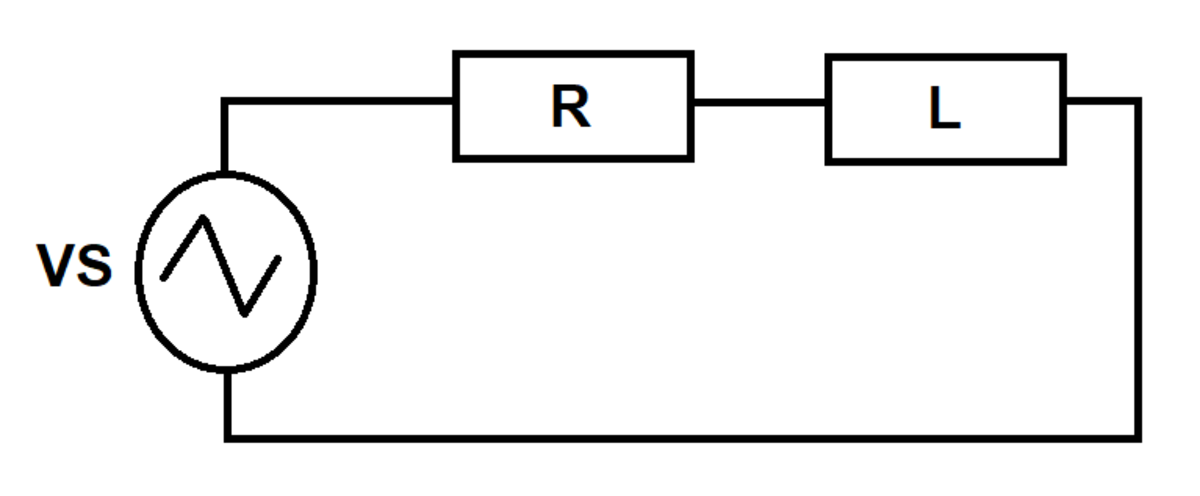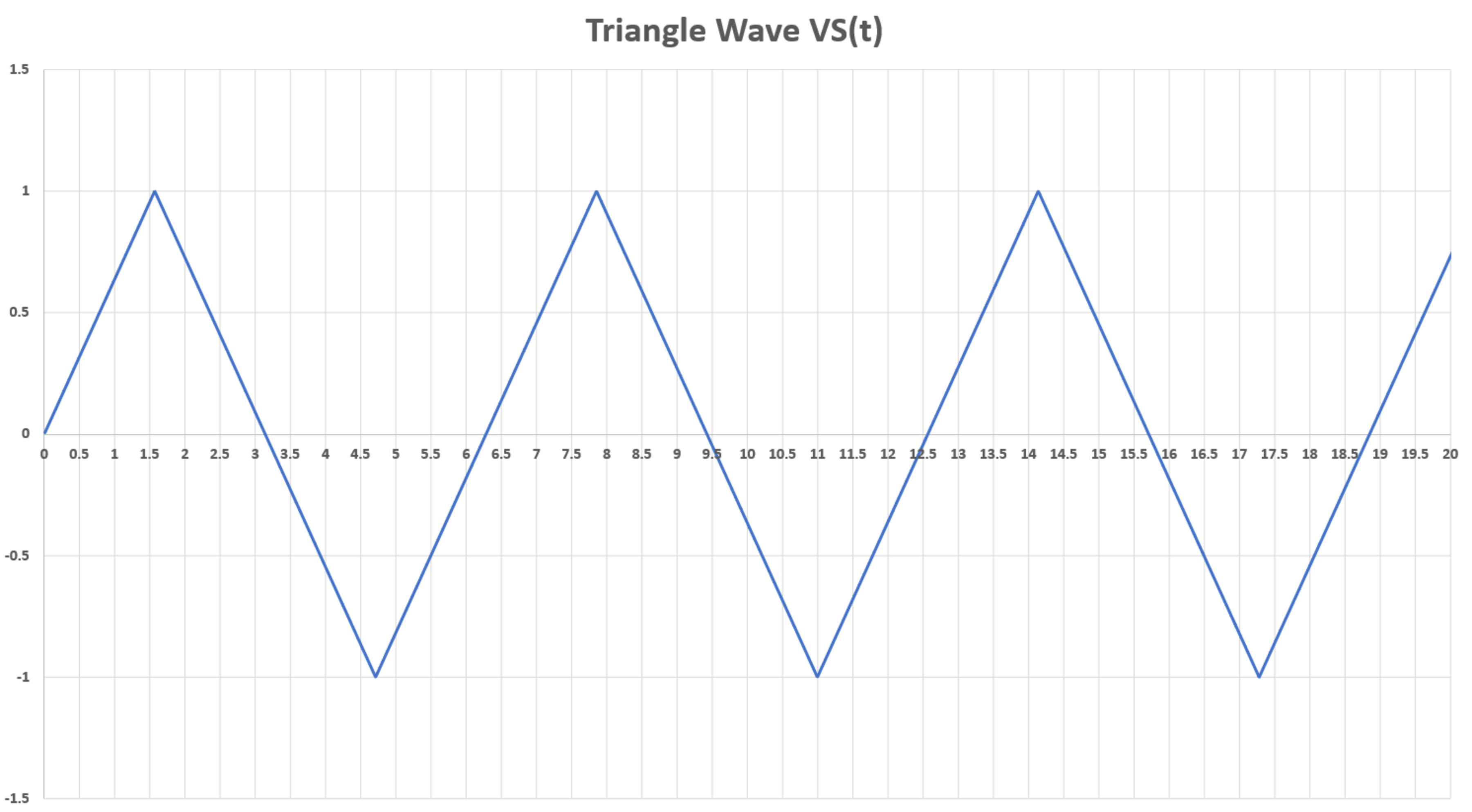RL with Triangle Wave Source
A triangle wave voltage source excites an circuit as shown. The source voltage is zero at time . It is bounded between and volts, and it has a rate of change of volts per second. Whenever the source voltage gets to either or , its rate of change (slope) is multiplied by . See the attached image.
At time , there is no current in the circuit. In steady state, after initial transients have died out, what is the peak instantaneous value of the current?
Bonus: If was a pure sine wave with the same peak value and time period as the source signal in this problem, what would the peak steady state current magnitude be? Why is the current magnitude smaller with a triangle wave input?
Details and Assumptions:
1)
2)
3)
All quantities are in standard
units


The answer is 0.782.
This section requires Javascript.
You are seeing this because something didn't load right. We suggest you, (a) try
refreshing the page, (b) enabling javascript if it is disabled on your browser and,
finally, (c)
loading the
non-javascript version of this page
. We're sorry about the hassle.
This is a good one. First, the triangular wave signal's equation was computed. It was found to be as follows:
V S ( t ) = ⎩ ⎪ ⎨ ⎪ ⎧ π 2 t − 4 n − π 2 t + 4 n + 2 π 2 t − 4 n − 4 2 π n ≤ t < 2 π n + 2 π 2 π n + 2 π ≤ t < 2 π n + 2 3 π 2 π n + 2 3 π ≤ t < 2 π n
n = ⌊ 2 π t ⌋
Having obtained V S ( t ) the circuit equation is:
L I ˙ + I R = V S ( t ) I ( 0 ) = 0
I have avoided doing this analytically. So numerical integration takes care of the rest. The following plot is hopefully illustrative:
If one looks at the area under the magnitude of the sources, that under the sine wave source is higher than the triangle wave source. This area can be thought of as a quantity proportional to the total energy delivered by the source per unit current (I am unsure of this proportionality). Thus, the energy delivered by the sine source is higher. I speculate that this is the reason behind the current magnitude being higher for the sine case. I may be wrong here, though.